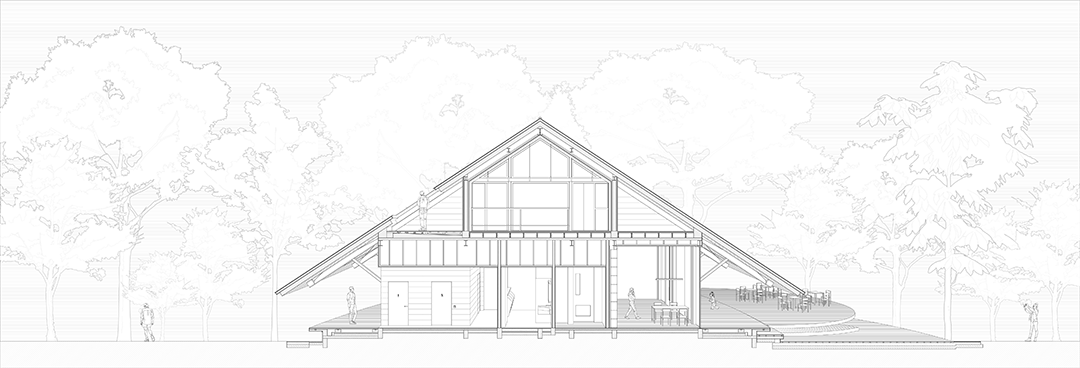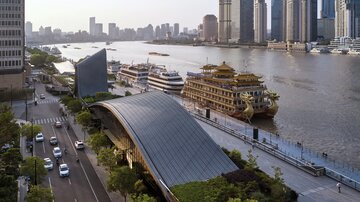Featured
Jinji Lake No.1 Post Station, Suzhou (China)
Reference details
- Location Suzhou, China
- Architects Galaxy Arch
- Technique(s) VMZINC Standing seam
- Aspect(s) QUARTZ-ZINC
- Application Type Roofing
- Copyright Arch-Exist Photography
The Suzhou Industrial Park was created in 1994 as an act of cooperation between Singapore and China. The People’s Republic wanted to mark its new policy of openness by creating a showcase district in terms of urban planning, development and public management.
The development of this extension zone takes into account the rich historic centre of this city near Shanghai, and its natural landscape which is characterised by two large lakes, including Jinji Lake, extending over more than 7 km2.

 The Suzhou of yesterday and tomorrow are linked by an axis embodied by the Orient Gate, two twin towers joined on their top floors to form an arch rising up out of the lake.
The Suzhou of yesterday and tomorrow are linked by an axis embodied by the Orient Gate, two twin towers joined on their top floors to form an arch rising up out of the lake.
The pavilion seems to emerge from the park at the foot of this monumental building. Its simplicity is evocative of a rural cabin clad in zinc, a material chosen by the Galaxy Arch architects because it was already present on a pre-existing cabin. A four-sided roof covers a series of platforms. They lead to a café hidden by the wide overhang of the roof. The removal of the gutter on the lower edge of the roof gives its four sides a circular shape, making it an exceptional sculptural object.
The roof becomes a textile object, a hat, a light skirt vibrating under the standing seam pattern and the variations in light.
At dusk, the metal takes on a bluish hue, almost matching the glass walls of the Orient Gate, and during the day, a sparkling white hue is added to the reflections of the lake water through the trees.
The architects made the most of the material’s ability to withstand cutting, removing part of the roof to create a triangular terrace, inserting a glass roof to bring light underneath, or cutting a discreet opening to the forest.
At night, the opaque veil lets the light from the café filter through, inviting the evening visitor to join this welcoming stopover.
The development of this extension zone takes into account the rich historic centre of this city near Shanghai, and its natural landscape which is characterised by two large lakes, including Jinji Lake, extending over more than 7 km2.

 The Suzhou of yesterday and tomorrow are linked by an axis embodied by the Orient Gate, two twin towers joined on their top floors to form an arch rising up out of the lake.
The Suzhou of yesterday and tomorrow are linked by an axis embodied by the Orient Gate, two twin towers joined on their top floors to form an arch rising up out of the lake.The pavilion seems to emerge from the park at the foot of this monumental building. Its simplicity is evocative of a rural cabin clad in zinc, a material chosen by the Galaxy Arch architects because it was already present on a pre-existing cabin. A four-sided roof covers a series of platforms. They lead to a café hidden by the wide overhang of the roof. The removal of the gutter on the lower edge of the roof gives its four sides a circular shape, making it an exceptional sculptural object.
The roof becomes a textile object, a hat, a light skirt vibrating under the standing seam pattern and the variations in light.

At dusk, the metal takes on a bluish hue, almost matching the glass walls of the Orient Gate, and during the day, a sparkling white hue is added to the reflections of the lake water through the trees.
The architects made the most of the material’s ability to withstand cutting, removing part of the roof to create a triangular terrace, inserting a glass roof to bring light underneath, or cutting a discreet opening to the forest.
At night, the opaque veil lets the light from the café filter through, inviting the evening visitor to join this welcoming stopover.














